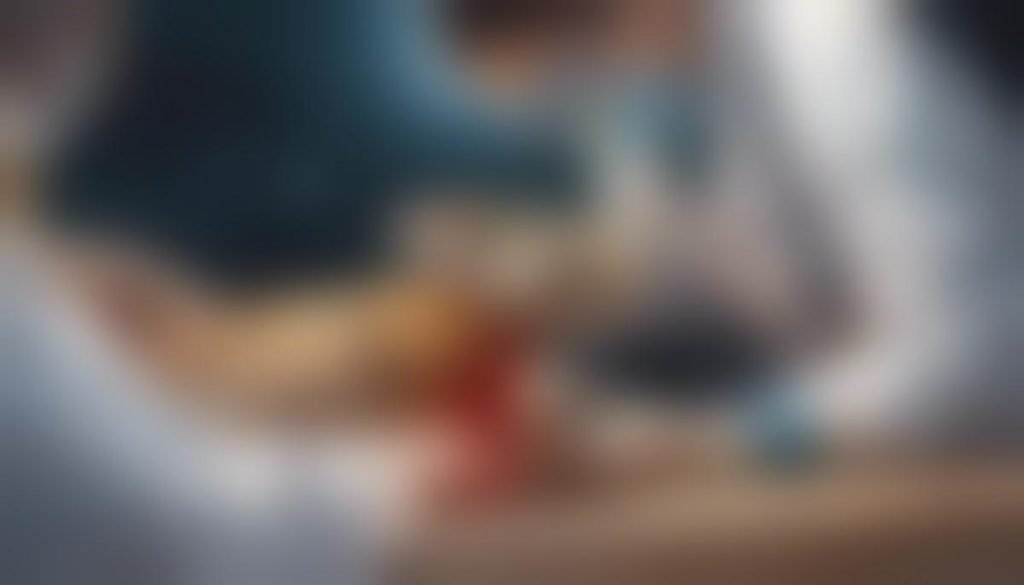Rabbits are delicate creatures that enchant us with their playful antics and soft fur. As responsible pet owners, it’s our duty to ensure these hopping bundles of joy remain healthy and well-cared for. So when an accident occurs, such as a rabbit losing a claw, it can be a daunting occurrence. However, with the right knowledge and tools at your disposal, you can confidently navigate through these stressful events. This essay aims to empower you, the general public, with essential information that covers everything from assessing the severity of your rabbit’s injury, to the intricacies of immediate care, cleaning, and crucial aftercare to help your furry friend bounce back to its normal self.
Assessing the Injury
Spotting Severe Claw Injuries in Your Fluffy Friends
Hey there, fellow bunny parents! Do you ever find yourself wondering about the health of your floppy-eared pal’s paws, especially those fast-growing claws? Well, hop right in! We all want to keep our fuzzy family members safe and sound, so let’s talk about how to distinguish a simple scratch from something that might need a bit more attention.
First things first, rabbits are indeed tough little critters, but that doesn’t mean they’re immune to injuries. Those active paws are constantly digging and exploring; it’s all part of their bunny charm! But occasionally, they might snag a claw, and that’s when our keen observational skills come into play.
Now, imagine you’re enjoying your daily playtime or health check session. You notice your rabbit favoring one foot, or there’s a visible sign of an injury. Here’s your quick checklist to assess the damage:
- Red Flag #1: Bleeding. Sure, a little nick might ooze a couple of drops, but persistent or heavy bleeding is a clear sign that a vet visit is in order.
- Red Flag #2: Limping or refusal to use the leg. If Thumper isn’t hopping as he usually does, or worse, not hopping at all, something’s up. Pain can cause your rabbit to avoid putting weight on the injured foot.
- Red Flag #3: Swelling or discoloration. Like with any injury, swelling can signal infection or a more severe trauma to the paw.
- Red Flag #4: Changes in behavior. We know our bunnies best, right? So if you notice them behaving oddly, like being more aggressive or abnormally quiet, it might be due to pain from their injury.
If you spot any of these concerning signs, it’s essential to keep calm and act quickly. Wrap the little one in a towel — think snug bunny burrito to prevent flailing, which could worsen the injury. Apply gentle pressure to a bleeding claw with a clean cloth to control any bleeding. Then, it’s time to call the vet. They’ll guide you through the next steps, whether it’s immediate care at home or an urgent appointment.
In the meantime, maintain a cozy rest area for your rabbit with easy access to food and water. Keep their living space clean because we don’t want any nasty germs getting into that claw injury.
Remember, prevention is always better than cure, so regular claw trims should be part of your rabbit care routine. Not too long, not too short, just right to keep those kicks light and agile.
Keep those bunny paws healthy, and they’ll be hopping happily ever after! And remember, in the warren of parenting, whether for kiddos or fur babies, always trust your instincts when it comes to health and well-being. Happy hopping, everyone!

Immediate Care and Cleaning
Oh no, a bunny boo-boo! As loving caregivers for these adorable hop-alongs, spotting a lost claw can sure give us quite the scare. Not to fret, though—here are the immediate steps to tend to that thumping friend.
First things first, stay calm. Rabbits are sensitive to stress and our furry pals need their humans cool as a cucumber. Ensure to approach the rabbit in a soothing manner, using gentle strokes and a quiet voice to avoid any additional panic.
If a claw is indeed missing, there might be a spot of blood. Small injuries may clot on their own, but one can always dab the area with a clean, absorbent cloth. It’s key not to use any human-grade antiseptics or creams unless they’ve been bunny-approved by a vet—those little systems are delicate.
Now, it’s time to do a tiny triage. If bleeding persists after a few minutes, try a styptic pencil or cornstarch. These are nifty to have in a rabbit first-aid kit, as they help staunch bleeding. Gently press the powder into the wound, ensuring not to cause more discomfort.
Should the bleeding be a bit more persistent than what a dab and a powder can handle, then it’s wise to contact the vet. They might recommend coming in or guide on additional at-home care. Keep the rabbit’s environment calm and quiet while waiting for the bleeding to stop or before heading to the vet.
While dealing with the immediate issue, it’s essential not ensuring no infection sets in. Cleanliness is next to bunny healthiness, so keep their living area spotless. This might mean a bit more elbow grease for a few days, but it’s worth it to prevent any nasties from complicating your rabbit’s healing.
Lastly, keep an eye on the hopper’s behavior in the days following the injury. Appetite changes, continued favoring of the hurt paw, or any signs of distress warrant a vet check. These could be indications of pain or infection that need professional attention.
Remember, building a haven for health includes knowing what to do when things go awry. With a dab, a dust, and some tender loving care, those bouncy buddies should be back on all fours, ready to hop happily again.
Happy hopping for the hopper heals! And remember, sometimes the best medicine is just a little extra love and attention. Keep those bunny bungalows clean and those bunny spirits high!

Monitoring and Aftercare
Understanding and Managing Your Rabbit’s Claw Injury Recovery
When our fluffy friends hurt themselves, it hits us right in the heart. Every bunny parent knows that when it comes to their pets, especially those as delicate as rabbits, vigilance is key to recovery. In the journey of healing from a claw injury, monitoring is the linchpin to avoid complications and promote a swift return to bunny bliss.
The initial response to a claw injury lays the groundwork for healing, but the care that follows is what truly matters. Once the vet has been consulted and a treatment plan is in place, it’s up to us to ensure that our hoppy companions get the best follow-up care.
Firstly, let’s talk about monitoring the injury site. It’s crucial to gently inspect the claw daily for signs of infection, such as increased redness, warmth, pus, or a foul odor. If these symptoms are present, a trip back to the vet is necessary. Handling your rabbit with care during these checks will minimize stress, promoting a more serene recovery.
Moving on to activity levels, while rest is vital, too much inactivity can also be a concern. Encourage your rabbit to move a little to maintain muscle strength and circulation, but make sure they’re not too active to avoid re-injury. If your rabbit is a little too energetic, consider setting up a smaller, temporary enclosure to restrict jumping and running.
Pain management is another critical aspect of post-injury care. If your vet prescribes pain medication, follow the dosage instructions precisely. Overmedication can be as detrimental as undermedication. Watch for signs your rabbit might be in pain, such as reluctance to move, grinding teeth, or a hunched posture.
Hydration and nutrition play vital roles in recovery. Make sure your rabbit has continuous access to fresh water and encourage eating with their favorite greens or treats. A lack of interest in food or water is cause for concern and warrants a vet visit.
Social interaction is also therapeutic. Spend quality time with your bunny to provide comfort and reassurance. A gentle stroke or a soft-spoken word can work wonders for their mood and, subsequently, their health.
Lasty, keep records of your observations. If you notice any deviations from their normal behavior or healing trajectory, having this information will be invaluable to your veterinarian for diagnosing potential complications.
Remember that every rabbit is an individual, and their recovery will be too. Keep your home serene and your heart open, and soon enough, those little paws will be back to their hopping best!

Empowered with this knowledge, you can effectively contribute to the health and wellbeing of your rabbit in the aftermath of a lost claw. Proper assessment, immediate care, and diligent aftercare are the cornerstones of recovery and will help preempt further complications. The bond between you and your pet is precious, and by confidently addressing any health issues that arise, that bond is only strengthened. Remember, being an informed and proactive pet owner is the best way to ensure your rabbit hops happily into a healthy future.



